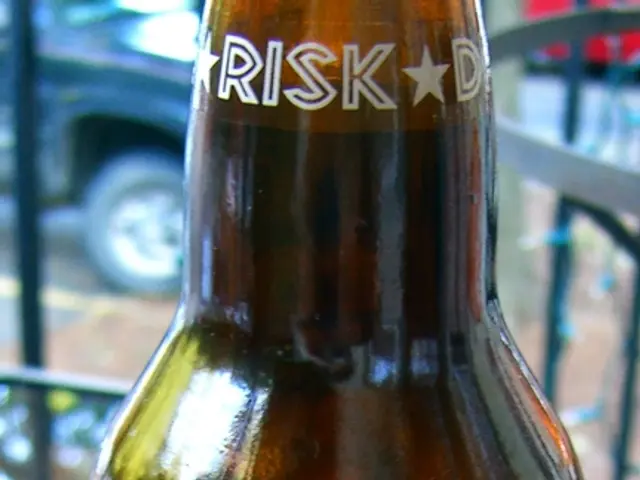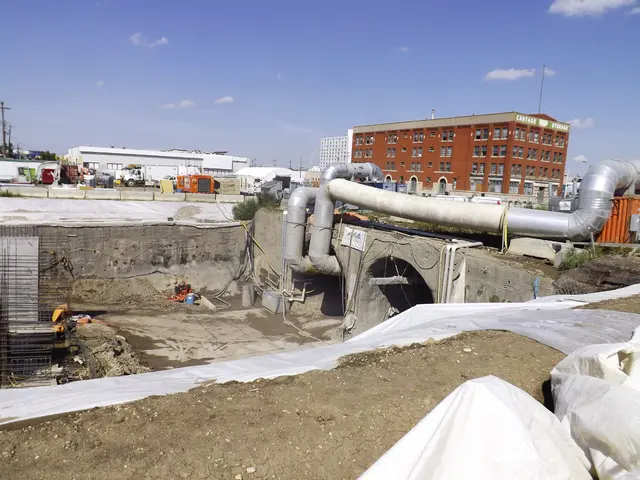Citizen Q&A Session with Bakytjan Sagintayev in Live Stream
Update from the Desk of Almaty's Top Dog, Bakytzhan Sagintayev:
Hey there, folks! I just wrapped up another thrilling episode of Akimat LIVE, where I answered the burning questions of our fine citizens. This week, we dived deep into the nitty-gritty of the COVID-19 situation and braced ourselves for any potential upcoming waves.
Every Wednesday evening, we gather to chat and keep you posted on the situation. And let me tell you,...well, let's just say things are heating up in our battle against this pandemic!
We've taken some serious steps to beef up Almaty's healthcare system, focusing mainly on emergency and primary health services. We've been gradually expanding the bed capacity in COVID hospitals, with 32 hospitals and 7,226 beds in the pipeline. Exciting news! Three new facilities are set to open in October – a trendy infectious disease hospital on RV-90 with 500 beds, another modular infectious pad with 300 beds, and two fancy-schmancy COVID clinics with 215 beds, thanks to private investments. You don't want to miss out on the action!
Now, about our medical warriors. Remember the gang of healthcare heroes working tirelessly during the pandemic peak? Well, we've got them on standby and ready to jump back into action whenever needed. To ensure our new clinics stay staffed, we're cooking up a plan for workforce management. We're working on calculating the staffing needs, selecting top medical talent, and getting everything nice and organized.
Don't fret about the workforce shortage – over 5,500 medical warriors are ready to join the fight if need be. And let's not forget about our reserve force! They're standing by, made up of teachers, medical students, and residents from our very own medical universities. These kids have got the skills and enthusiasm to tackle COVID-19 head-on.
Apart from our cozy COVID hospitals, we've been beefing up our medical organizations' equipment. You heard it right – we've invested in 52 ultra-slick ultrasound machines, 38 X-ray gizmos, 269 ventilators (because who doesn't love ventilators?!), five CT scanners, two MRI machines, and tons more. We've also snagged 1,300 multifunctional medical beds, 250 bedside monitors, 43 units of laboratory equipment, and 1,050 oxygen concentrators. Bye-bye, shortage issues!
We're not stopping there, folks! We're rolling out a centralized medical gas system in eight first-line hospitals, taking care of 24,000 beds. Let's not forget about waste disposal – we're constructing systems for wastewater disinfection and medical waste disposal in 17 and 13 hospitals, respectively. And guess what? 35 sweet new ambulances have joined our fleet, with plans to add another 100 vehicles by year's end.
But there's more! We're building a centralized sewage system to lessen the strain on our infrastructure during the incoming winter. Plus, we'll ensure roads stay clear so you can get to those important medical appointments with ease.
Hang tight as we continue our battle against COVID-19 together. Catch you next week with more updates from yours truly! Remember, if you've got questions, don't be afraid to hit us up. We're here for you every step of the way!
Sources:
- European Health Policy Institute
- World Health Organization (WHO)
- Johns Hopkins Bloomberg School of Public Health Center for Health Security
- Government of the Republic of Kazakhstan (various publications)
- Science plays a crucial role in our ongoing battle against COVID-19.
- The COVID-19 situation requires continuous updates and monitoring, as we brace for potential upcoming waves.
- Almaty's healthcare system has been beefed up, focusing specifically on emergency and primary health services.
- Expansion of bed capacity in COVID hospitals has been gradual, with 32 hospitals and 7,226 beds in the pipeline.
- Exciting new facilities are set to open in October, including a trendy infectious disease hospital, a modular infectious pad, and two COVID clinics.
- The medical warriors who worked tirelessly during the pandemic peak are on standby and ready to jump back into action whenever needed.
- Workforce management plans are being developed, focusing on calculating staffing needs and selecting top medical talent.
- Over 5,500 medical warriors are ready to join the fight if needed, along with a reserve force consisting of teachers, medical students, and residents from local universities.
- Equipment shortages have been addressed with investments in ultrasound machines, X-ray gizmos, ventilators, CT scanners, MRI machines, and more.
- Centralized medical gas systems are being introduced in eight first-line hospitals, benefiting 24,000 beds.
- Waste disposal has been strengthened with systems for wastewater disinfection and medical waste disposal in 17 and 13 hospitals, respectively.
- Ambulance services have been augmented, with 35 new vehicles joining the fleet and plans to add another 100 by the end of the year.
- A centralized sewage system is being built to alleviate strain on infrastructure during the winter.
- Roads will be kept clear to ensure easy access to important medical appointments.
- The ongoing battle against COVID-19 requires constant cooperation between the government and its citizens.
- Three newly-opened facilities focus mainly on emergency and primary health services.
- The private sector is contributing to the COVID-19 battle with investments in new clinics.
- The workforce shortage has been addressed with over 5,500 medical warriors ready to join the fight.
- The reserve force consists of teachers, medical students, and residents from local universities.
- Medical equipment shortages have been alleviated with investments in modern devices.
- The centralized medical gas system will benefit 24,000 beds in first-line hospitals.
- Waste disposal systems have been strengthened in 17 and 13 hospitals.
- The number of ambulances in the fleet has increased, with plans to add more vehicles by year's end.
- The centralized sewage system aims to reduce strain on infrastructure during the winter.
- Road infrastructure is being maintained to ensure access to medical appointments.
- Government commitment to healthcare is essential to combating COVID-19 effectively.
- The introduction of modern medical equipment improves the country's healthcare capabilities.
- The ongoing COVID-19 situation requires continuous public engagement and cooperation with the government.








